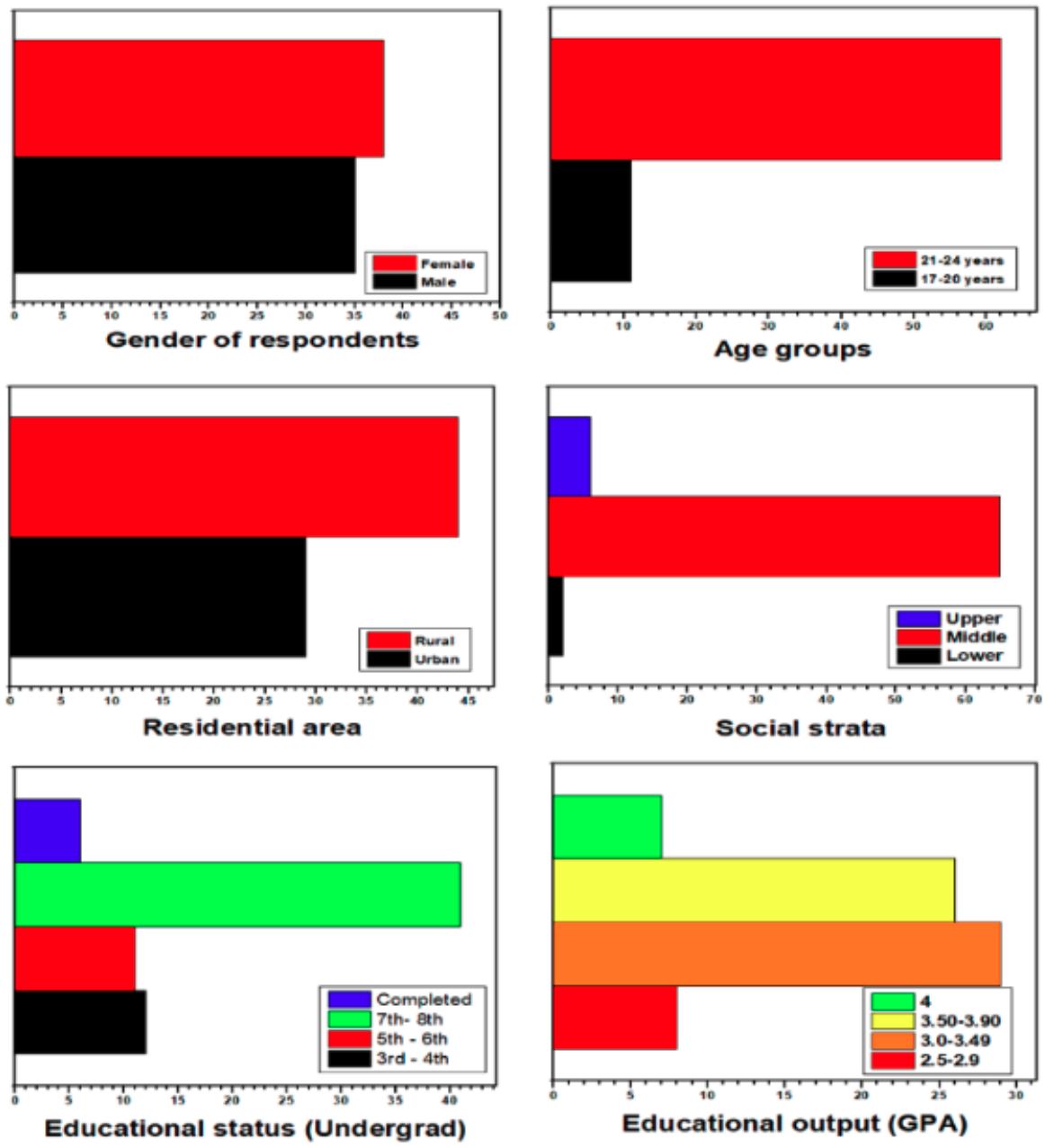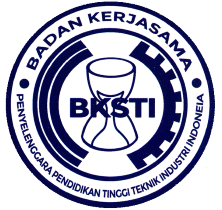Social Media Addiction in The Young Community: Elucidation of The Development of Behavioral Responses
DOI:
https://doi.org/10.12928/spekta.v4i2.8588Keywords:
addiction, information sources, customers, aggressiveness, mental healthAbstract
Background: University students have been using social media in an uncontrolled manner without knowledge of the negative impacts on their cognitive functionality. Therefore, an assessment of the alterations in the behavior pattern of the university students is required to associate the linkage between social media use and subsequent aggressiveness.
Contribution: Current work has for the first time conducted a socio-behavioral study on the younger university students for gaining an insight into their inclination towards using different social media platforms and changes in their behavioral patterns.
Method: University students (73 total; 35 males and 38 females) were chosen who had history of using social media for the last three to five years. These students were affiliated with higher education institutions in Pakistan and the time of analysis was September 2022 – January 2023. An open-ended questionnaire was filled and statistically analyzed for significance using Origin software and SPSS software
Results: This work has identified significant relationship between the social media utilization and alterations in the behavior of university students. Different determinants worked upon in this research are the impacts of the social media on cognitive occupation, emotive functions, relapse, conflict, anger, and hostility.
Conclusion: The study has associated and evaluated such behavioral factors as determinants of aggression in the younger generation. Also, the study has compared and contrasted the appearance of aggression as a pattern taking in consideration different gender roles to comprehend the role of gender in perceiving and adopting social media trends.
References
A. S. T. Olanrewaju, M. A. Hossain, N. Whiteside, P. Mercieca, “Social media and entrepreneurship research: A literature review,” International Journal of Information Management, vol. 50, pp. 90-110, 2020, https://doi.org/10.1016/j.ijinfomgt.2019.05.011.
K. Keib, B. W. Wojdynski, C. Espina, J. Malson, B. Jefferson, Y. Lee, “Living at the speed of mobile: How users evaluate social media news posts on smartphones,” Communication Research, vol. 49, no. 7, pp. 1016-1032, 2022, https://doi.org/10.1177/00936502211018542.
K. A. Foster, B. Davis, A. Foell, “Innovations to Photovoice: Using Smartphones & Social Media,” Urban Affairs Review, vol. 59, no. 5, pp. 1728-1744, 2023, https://doi.org/10.1177/10780874221100263.
D. Creevey, J. Coughlan, C. O'Connor, “Social media and luxury: A systematic literature review,” International Journal of Management Reviews, vol. 24, no. 1, pp. 99-129,2021, https://doi.org/10.1111/ijmr.12271.
I. Ali, M. Balta, T. Papadopoulos, “Social media platforms and social enterprise: Bibliometric analysis and systematic review,” International Journal of Information Management, vol. 69, p. 102510, 2023, https://doi.org/10.1016/j.ijinfomgt.2022.102510.
M. Hayes “Social media and inspiring physical activity during COVID-19 and beyond,” Managing Sport and Leisure,” Managing Sport and Leisure, vol. 27, no. 1-2, pp. 14-21, https://doi.org/10.1080/23750472.2020.1794939.
E. A. Vogels, R. Gelles-Watnick, N. Massarat, “Teens, social media and technology 2022,” Pew Research Center: Internet, Science & Technology, 2022, https://policycommons.net/artifacts/2644169/teens-social-media-and-technology-2022/3667002/.
J. Luomanen, P. Alasuutari, “The rising social media and declining alcohol use: the case of Finnish teenagers,” Contemporary Drug Problems, vol. 49, no. 2, 213-227, 2022, https://doi.org/10.1177/00914509221077349.
S. Z. Salas‐Pilco, Y. Yang, Z. Zhang, “Student engagement in online learning in Latin American higher education during the COVID‐19 pandemic: A systematic review,” British Journal of Educational Technology, vol. 53, no. 3, pp. 593-619, 2022, https://doi.org/10.1111/bjet.13190.
C. Arrivillaga, L. Rey, N. Extremera, “A mediated path from emotional intelligence to problematic social media use in adolescents: The serial mediation of perceived stress and depressive symptoms,” Addictive Behaviors, vol. 124, p. 107095, 2022, https://doi.org/10.1016/j.addbeh.2021.107095.
I. K. Nti, S. Akyeramfo-Sam, B. Bediako-Kyeremeh, S. Agyemang, “Prediction of social media effects on students’ academic performance using Machine Learning Algorithms (MLAs),” Journal of Computers in Education, vol. 9, no. 2, pp. 195-223, 2022, https://doi.org/10.1007/s40692-021-00201-z.
C. H. Markey, E. A. Daniels, “An examination of preadolescent girls’ social media use and body image: Type of engagement may matter most,” Body Image, vol. 42, pp. 145-149, 2022, https://doi.org/10.1016/j.bodyim.2022.05.005.
B. Eschenbrenner, F. F. Nah, V. R. Telaprolu, “Efficacy of social media utilization by public accounting firms: Findings and directions for future research,” Journal of Information Systems, vol. 29, no. 2, pp. 5-21, 2015, https://doi.org/10.2308/isys-50894.
P. Uram, S. Skalski, “Still logged in? The link between Facebook addiction, FoMO, self-esteem, life satisfaction and loneliness in social media users,” Psychological Reports, vol. 125, no. 1, pp. 218-231, 2022, https://doi.org/10.1177/0033294120980970.
T. Touloupis, “Facebook use and cyberbullying by students with learning disabilities: the role of self-esteem and loneliness,” Psychological reports, 2022, https://doi.org/10.1177/00332941221138471.
H. B. Macït, G. Macït, O. Güngör, “A research on social media addiction and dopamine driven feedback,” Mehmet Akif Ersoy Üniversitesi İktisadi ve İdari Bilimler Fakültesi Dergisi, vol. 5, no. 3, pp. 882-897, 2018, https://doi.org/10.30798/makuiibf.435845.
R. Burhan, J. Moradzadeh, “Neurotransmitter dopamine (DA) and its role in the development of social media addiction,” Journal of Neurology & Neurophysiology, vol. 11, no. 7, pp. 1-2, 2020, https://doi.org/10.35248/2155-9562.20.11.507.
M. Tschaepe, “Undermining dopamine democracy through education: Synthetic situations, social media, and incentive salience,” Pragmatism Today, vol. 7, no. 1, pp. 32-40, 2016, https://www.pragmatismtoday.eu/summer2016/Pragmatism_Today_Volume7_Issue1_Summer2016.pdf#page=32.
A. Westbrook, A. Ghosh, R. V. D. Bosch, J. I. Määttä, L. Hofmans, R. Cools, “Striatal dopamine synthesis capacity reflects smartphone social activity,” Iscience, vol. 24, no. 5, p. 102497, 2021, https://doi.org/10.1016/j.isci.2021.102497.
H. Güler, O. H. Öztay, V. Özkoçak, “Evaluation of the Relationship Between Social Media Addiction and Aggression,” Gaziantep University Journal of Social Sciences, vol. 21, no. 3, pp. 1350-1366, 2022, https://doi.org/10.21547/jss.1109602.
L. Eraslan, A. Kukuoglu, “Social Relations in Virtual World and Social Media Aggression,” World Journal on Educational Technology: Current Issues, vol. 11, no. 2, pp. 140-149, 2019, https://doi.org/10.18844/wjet.v11i2.4145.
N. Caner, D. Evgin, “Digital risks and adolescents: The relationships between digital game addiction, emotional eating, and aggression,” International journal of mental health nursing, vol. 30, no. 6, pp. 1599-1609, 2021, https://doi.org/10.1111/inm.12912.
K. L. Chung, I. Morshidi, L. C. Yoong, K. N. Thian, “The role of the dark tetrad and impulsivity in social media addiction: Findings from Malaysia,” Personality and Individual Differences, vol. 143, pp. 62-67, 2019, https://doi.org/10.1016/j.paid.2019.02.016.
M. Gnapika, B. Kour, A. Dadhwal, R. Ranjan, “Effect of Social Media Addiction on Aggression and Overall Quality of Life on Undergraduate Students,” NeuroQuantology, vol. 20, no. 17, p. 1418-1425, 2022, https://doi.org/10.48047/NQ.2022.20.17.NQ880176.
T. Zeitzoff, “How social media is changing conflict,” Journal of Conflict Resolution, vol. 61, no. 9, pp. 1970-1991, 2017, https://doi.org/10.1177/0022002717721392.
E. C. Bell, M. C. Willson, A. H. Wilman, S. Dave, P. H. Silverstone, “Males and females differ in brain activation during cognitive tasks,” Neuroimage, vol. 30, no. 2, pp. 529-538, 2006, https://doi.org/10.1016/j.neuroimage.2005.09.049.
Y. Xuan., “Resting-state brain activity in adult males who stutter,” PloS one, vol. 7, no. 1, p. e30570, 2012, https://doi.org/10.1371/journal.pone.0030570
S. Ginger, “Female brains vs. male brains,” International Journal of Psychotherapy, vol. 8, no. 2, pp. 139-145, 2010, https://doi.org/10.1080/13569080310001612789
S. Nadaa, A.P. Rini, N. Pratitis, A.P. Rini, “The Influence of Self-Control and the Intensity of Social Media Usage on Adolescent Sexual Behavior,” Jurnal Psikologi Teori dan Terapan, vol.14, no 3, pp.311-321. https://doi.org/10.26740/jptt.v14n03.p311-321
D. Effrosynidis, G. Sylaios, A. Arampatzis, “Exploring climate change on Twitter using seven aspects: Stance, sentiment, aggressiveness, temperature, gender, topics, and disasters,” Plos one, vol. 17, no. 9, p. e0274213, 2022, https://doi.org/10.1371/journal.pone.0274213
V. Sbragaglia.“Recreational angling and spearfishing on social media: insights on harvesting patterns, social engagement and sentiments related to the distributional range shift of a marine invasive species,” Reviews in Fish Biology and Fisheries, vol. 32, no. 2, pp. 687-700, 2022, https://doi.org/10.1007/s11160-022-09699-7

Downloads
Published
How to Cite
Issue
Section
License
Copyright (c) 2023 Yasmeen Zainab, Noor Fatima Ajmal, Hina Iqbal

This work is licensed under a Creative Commons Attribution-ShareAlike 4.0 International License.
Authors who publish with SPEKTA (Jurnal Pengabdian Kepada Masyarakat: Teknologi dan Aplikasi) agree to the following terms:
- Authors retain copyright and grant the journal the right of first publication with the work simultaneously licensed under a Creative Commons Attribution License (CC BY-SA 4.0) that allows others to share the work with an acknowledgment of the work's authorship and initial publication in this journal.
- Authors are able to enter into separate, additional contractual arrangements for the non-exclusive distribution of the journal's published version of the work (e.g., post it to an institutional repository or publish it in a book), with an acknowledgment of its initial publication in this journal.
- Authors are permitted and encouraged to post their work online (e.g., in institutional repositories or on their website) prior to and during the submission process, as it can lead to productive exchanges, as well as earlier and greater citation of published work.

This work is licensed under a Creative Commons Attribution-ShareAlike 4.0 International License.












